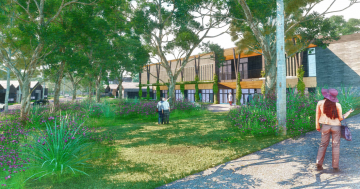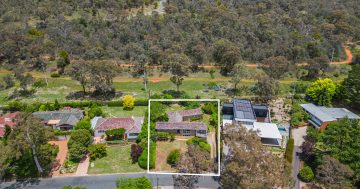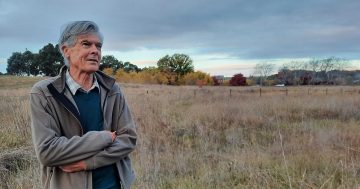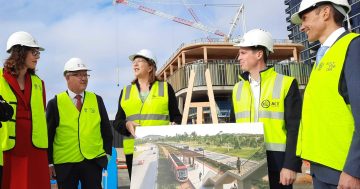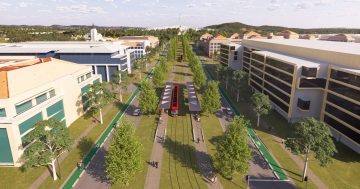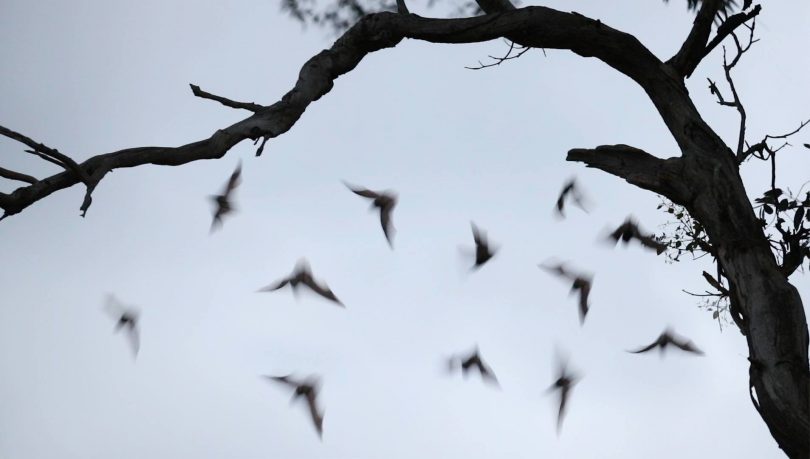
Microbats Section 66 Deakin. Photo: Ben Appleton.
I enjoy my Sunday mornings with a cup of tea, the weekend paper, and the chirping of a jackhammer down the road as much as the next man. Indeed, I can’t help but admire the determination with which the ACT Government is literally laying down the trackwork to make sure that its growing population doesn’t outstrip its infrastructural expansion.
Canberra is a unique city in the way it is still deeply rooted in its natural landscape, having thus far avoided becoming lost in a black cloud of high rises and car fumes. However, when development projects are implemented at such an alarming rate, some of Canberra’s unique environmental characteristics risk being blocked out of the picture.
A development proposal from the construction firm Hindmarsh for a block of land on Kent Street in Deakin known as ‘Section 66’ has met with a strong community backlash. In April this year, Hindmarsh submitted a development application for the allowable building size of its storage facilities to be increased from 500 m2 to 20,000 m2, understandably invoking outcry from the Deakin, Hughes and Garran Residents’ Associations who, along with the Red Hill Regenerators, see this plan as an invasion onto precious wildlife space.
As someone who moved to Canberra from Sydney with the hope of enjoying the bush without having to go completely rural, I am concerned about the precedent this development might be setting for future urban development proposals. The land at Section 66 was the first place where gang-gang nests were photographed in Canberra. The trees also play host to microbats, sugar gliders, and crimson rosellas. The baby gang-gangs eat the blue gum nuts from trees that have been there for over 50 years. There have also been sightings of eagles, swamp wallabies, and echidnas while on their commute to the Red Hill Nature Reserve. Yet the DA environmental report overlooked this diverse population when it was carried out in July 2017 – in the middle of winter when the plants were not blooming and the gang-gangs were not nesting.
These environmental concerns are new territory for the Legislative Assembly which saw one of the largest petitions to date in November 2017 with over 3,100 signatures calling for the protection of the Red Hill Nature Reserve and its surroundings, including Section 66. In response, the Assembly announced the drafting of an “Integrated Plan” and resolved not only to include, “a detailed environmental plan to protect Red Hill Nature Reserve from the impact of the proposed developments” but also emphasised that development must take place in “close consultation with the community.” It is encouraging to see that the Deakin development may be paving the way for new approaches to environmental conflicts that could increase as Canberra pursues its urban growth.
Chris Steel MLA states that, “I hope that the lease-holders take into account community and environmental concerns and the integrated plan before they progress with any development on their block.” In the meantime, residents who sent in their objections against the development proposal at the end of May are anxiously waiting for the outcome to hopefully be delivered in the next week.
With the Nature In Our City inquiry underway by the ACT Government, the Deakin development certainly demonstrates the intimate relationship of Canberra residents to their local natural landscapes even as Canberra continues to urbanise. As a young and still relatively small city, Canberra must take the opportunity to keep its physical infrastructure one or two steps ahead of its expanding population while still preserving the green spaces that Walter Burley Griffin first envisaged as part of this garden city.
Do you think Canberra’s green space and bush settings are at risk from development? Is Section 66, Deakin a test case? How can Canberra preserve its environmental jewels while at the same time ensuring it has the needed infrastructure for a growing city?












